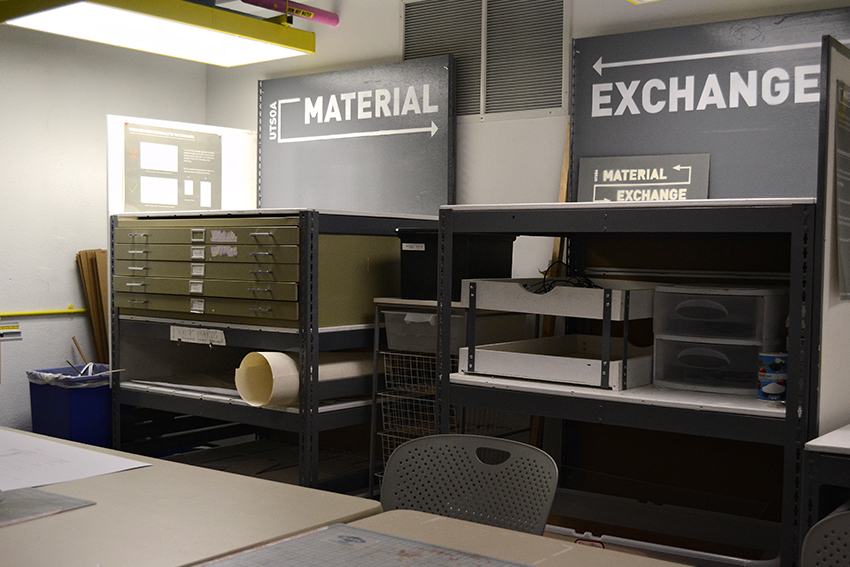A program in the School of Architecture is helping UT reduce, reuse and recycle by gathering excess materials and making them available to students.
The Material Exchange, located within the Sutton Hall Technology Lab, is a give-and-take system for the UT community to share materials for studio coursework and personal projects. UT School of Architecture lecturer Sarah Gamble saw an opportunity to cut down on studio waste and, with funding from the UT Green Fee, launched the Material Exchange in the fall of 2015.
“A lot of waste doesn’t fit into the campus-wide recycling streams,” Gamble said. “There was, and is, a need to develop new systems to manage materials like wood, which can’t be tossed into a recycling bin. Reusing is one big way to reduce landfill waste.”
At the end of each semester, volunteers collect over $7,500 worth of abandoned material from student desks in the UT School of Architecture. The project addresses UT’s 2020 Zero Waste Goals, which aim to increase campus-wide waste diversion to 90 percent in the next three years. Another purpose of the Material Exchange is to save students money. The cost of materials can be a large burden on the student population, according to Gamble.
“The costs for studio definitely add up,” said Kirthi Dronamraju, a Plan II freshman. “Every bit of help counts.”
Savvy students grab the materials from the end-of-semester sweep quickly, Gamble said. She encourages cash-strapped students to volunteer on December 20th.
“If you help out, you get first dibs,” Gamble said.
During the school year, the Material Exchange relies on an honor system to keep going. The space is maintained with help from the Technology Lab and Material Resource Center staff.
“One of our goals is to instill a culture of re-use in the studios,” Gamble said.
Her team is also developing mobile Material Exchange stations that can be used in classrooms.
“Many studios have an informal scrap bin, but we’d like to streamline the process,” Gamble said.
Now, the Material Exchange team is planning on developing a similar system in the Department of Art and Art History. Gamble said she sees the makerspaces across campus, such as the Foundry in the art department, as an opportunity to work together for a sustainable future.
“We’re learning about the culture over there, seeing where we can slot something like this in, if they want,” Gamble said.
The Material Exchange program is holding an informational lunch on Wednesday in ART 4.202 at 11:30.















